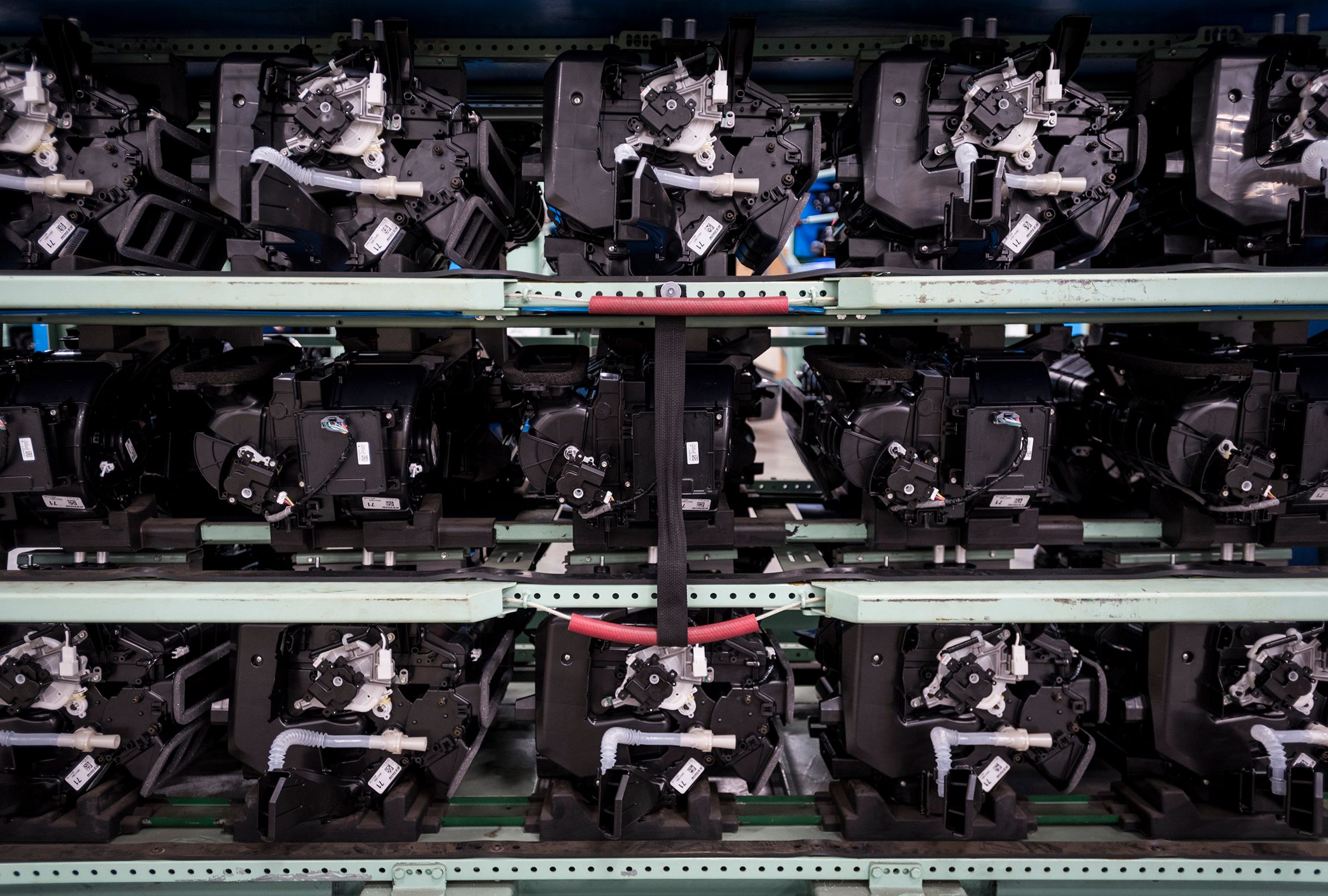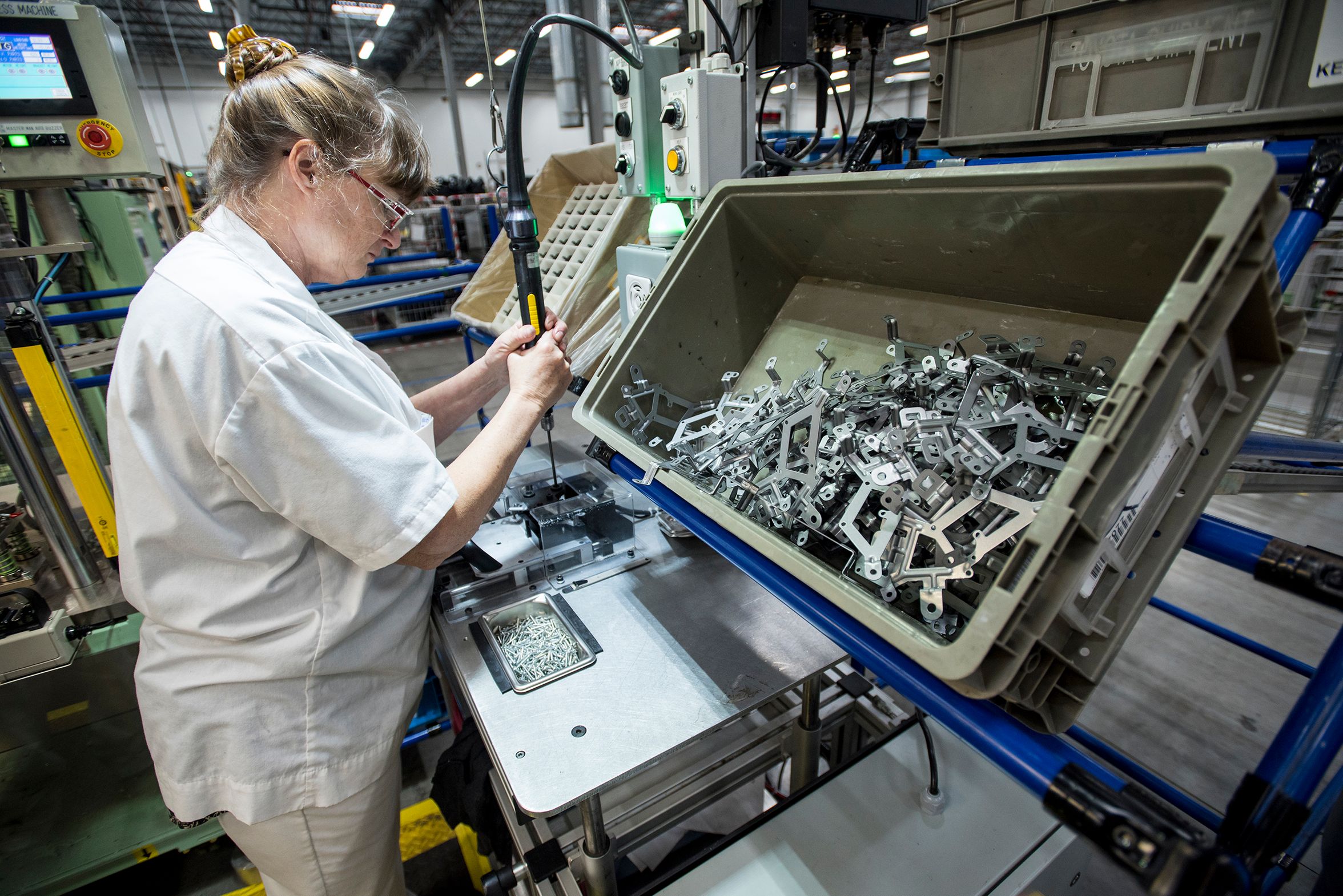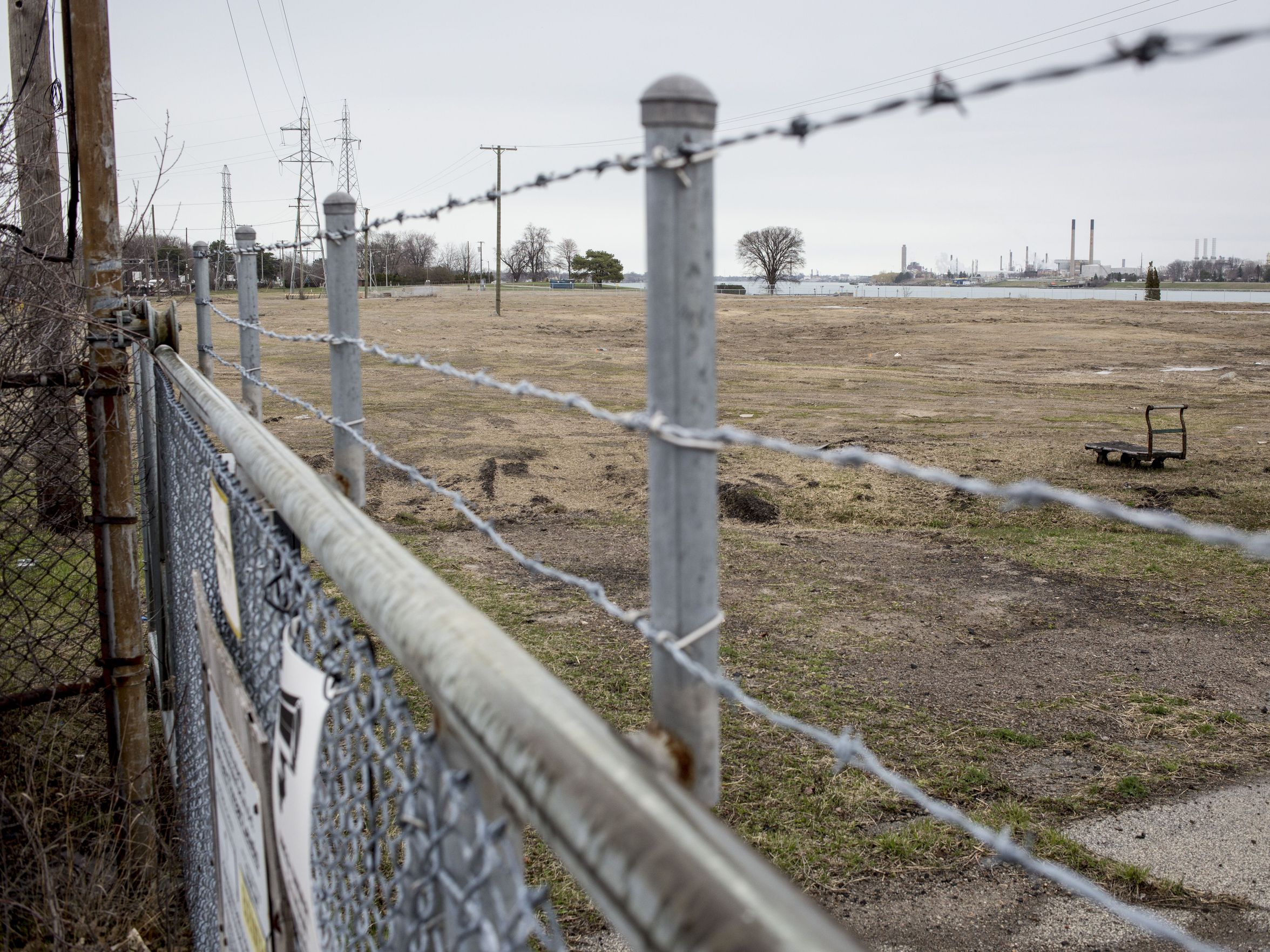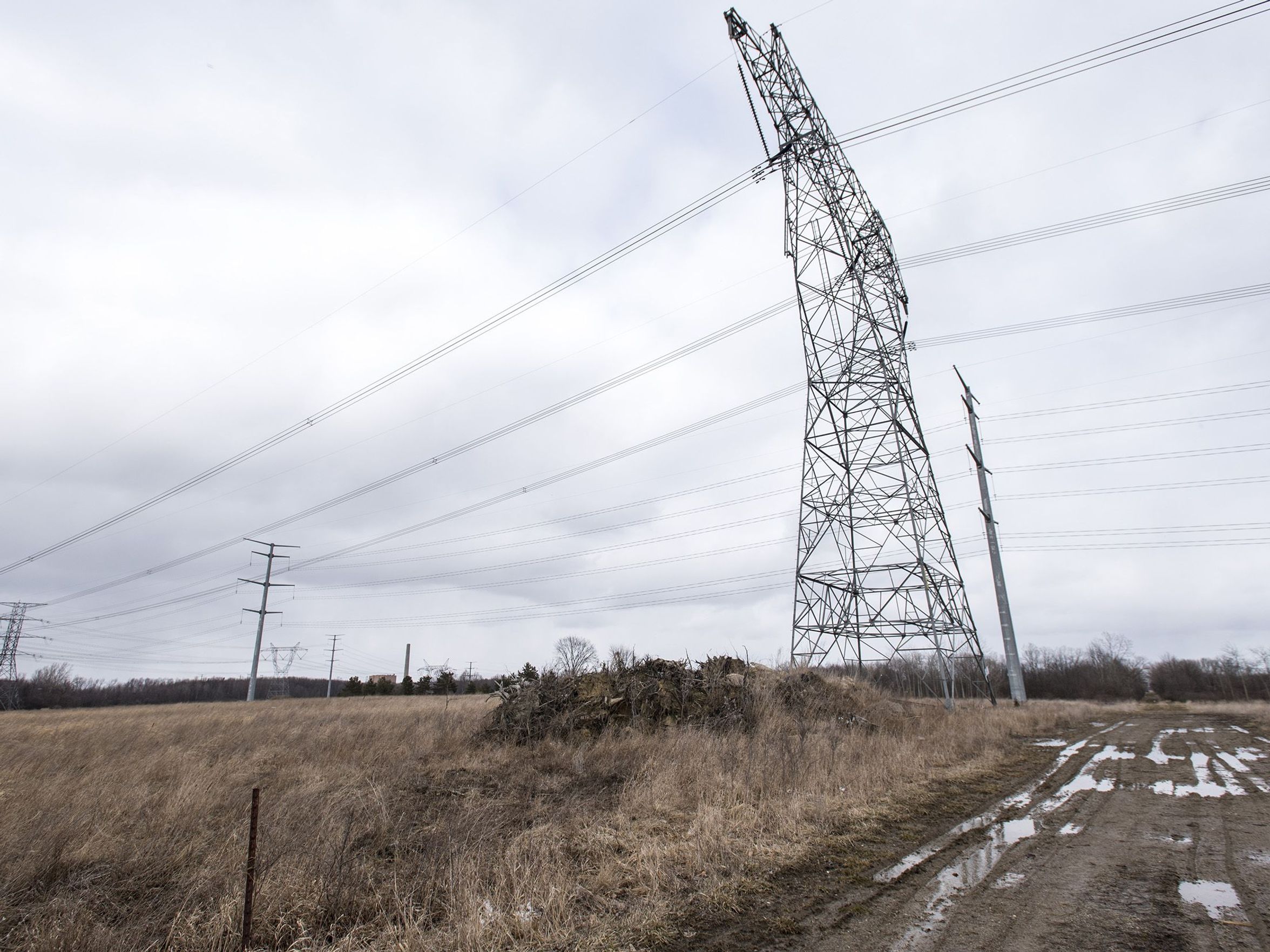
Port Huron company recognized for growth
August 28, 2018
Partnering with local businesses to enhance student opportunities
January 24, 2019SEVERAL SITES HAVE LONG SAT VACANT BUT ARE SHOWING MORE RECENT SIGNS OF PROMISE, AND LOCAL LEADERS SAID THEY JUST WANT TO BE PREPARED.
Jackie Smith, Port Huron Times Herald
Published 3:07 p.m. ET Dec. 16, 2018
Although he hears rumors about developments coming to Capac, Village President John Grzyb said he doesn’t always lend them much credence.
“Until someone knocks on my door,” or they file site plans with the planning commission, it’s not official, he said. “I do know I talked with a gentleman the other day. I know that Dollar General is looking to locate in Capac, so development is coming.”
And that’s just one example following a conversation, he said, he had Tuesday.
Be they stores, factories or hotels, Grzyb said people want more things to sprout in the area. But rumor or not, one part of town may be a bit more primed than others.
At the end of 2017, the village began exploring the possibility of a medical marijuana facility at the southwest corner of Donald and Capac roads. A 650,000-square-foot warehouse had been proposed for a grow operation, and its developer told the village it would create 284 jobs with median incomes of $62,000. Officials worked on an ordinance to allow such a facility, but residents were largely against it.
However, officials said other ideas would work down the road.
It’s just a matter of time, they said.
“We’ve got city water and city sewer there, and it’s off the freeway,” Grzyb said. “I think it’s something that’s going to develop. What actually is going to development there, I don’t know. … But there’s property on both sides of Capac Road, and they’re both open and ready.”
Capac is just one of several pockets across St. Clair County being pushed for significant development as what both community and economic development officials consider top properties.
From acreage abutting Macomb County and places on the waterfront to open swaths of land in the county’s northern townships, Dan Casey, executive director at the Economic Development Alliance of St. Clair County, admitted they haven’t always had the best luck filling vacancies.
But the reasons why vary from site to site, and most of the potential uses have been industrial.
Several sites have long sat vacant but are showing more recent signs of promise, and local leaders said they just want to be prepared.
Assembled automotive HVAC units are stored in a crate before being shipped Thursday, Dec. 13, 2018 at Keihin Michigan Manufacturing LLC in Capac.
(Photo: Brian Wells/Times Herald)
Casey said the EDA was already aware of the Donald and Capac property before the village’s marijuana discussion kicked off last year. Following one of its hearings, he said he was approached by the property’s current owner.
“We were there for 45 minutes after the meeting — with him telling me about all the things they could do to get that property developed,” Casey said. “So, he’s pretty aggressive or motivated that he wants something to happen there, and we want to help Capac because they’re one of our members.”
At least part of that area has a recent history of success in attracting industry.
Farther south, Keihin Michigan Manufacturing has seen bouts of job growth since it opened in 2010, solidifying its Capac facility’s footprint.
The auto parts supplier came to the village with 160 jobs, and by 2014, those numbers had grown with plans at the time to add additional positions and accommodate a reconfiguration in the plant. Since the numbers have changed, but the company still initiated a job fair earlier this year with the hopes of attracting more employees. As of Nov. 6, it employed 190 people.
Rebecca Sajewski, Keihin’s material operations manager, said the Capac plant is a good location and near the “big three local automakers.” She said they’ve “begun to do business more with the big three than we have in the past.”
They’re close to Canada, she said, and if need be, there’s close to train and port access. She said, “We’re just in a really nice position.”
“Everybody talks about how the future brings change, and change can be really, really good, especially in the industry we’re in,” Sajewski added. “We’re excited about what we’re seeing. The world is starting to look at electric cars and we’re following suit with that. They’re looking for alternative energy, it’s about being green. ... We’re excited about where we’re located for the associates we have, for our future associates.”
Pieces of Port Huron
It was never a secret that the riverfront property primarily owned by Acheson Ventures was technically up for sale.
For the last couple of years, city officials have publicly mentioned it. Grocery store plans and resurrected hopes to turn the old St. Clair County-owned Art Van building into a marketplace brought questions about the farmers market seasonally held at Vantage Point back into the discussion.
The area itself includes 40 acres stretching from Desmond Marine south to the Seaway Terminal.
AV’s website now says the company is open to commercial, recreational and residential developments.

Sally McIver works on assembling an automotive HVAC motor Thursday, Dec. 13, 2018 at Keihin Michigan Manufacturing LLC in Capac.
(Photo: Brian Wells/Times Herald)
Earlier this month, Mike Delong, Acheson’s vice president of operations, said the mission wasn’t new but acknowledged that they're “making another push to complete” it.
Casey said it was like moving “from a phase of active development to a phase of active sellers.” He agreed that decision was made “fairly recently.”
“We just listed that on the state’s site database at the request of the Acheson Ventures people,” he said. “We’re waiting for final approval on it.”
he 40 acres is split into nine parcels, including the five acres that are home to Vantage Point, where the Great Lakes Maritime Center is.
The site immediately to the south, which includes 16 acres with property off of Court and Military streets, is owned by the Bay Millis Indian Community. It had originally been purchased several years ago with the intent to develop a casino — a prospect that Casey said “has really been looming over that property.”
Six acres on St. Clair River adjacent to the Harborside Office Center, Blue Water YMCA and Blue Water River Walk is listed next, followed by another eight acres farther south and the Port Huron Seaway Terminal, or bean dock off of Military Street.
The Parfet office building, a half-acre vacant lot and neighboring refurbished gas station on Military are also listed. Desmond Marine off of Water Street where the St. Clair and Black rivers meet rounds out the north end.
Delong told the Times Herald Dec. 4 that Acheson was no longer planning to keep a strict hold of what would be developed on the property, though their preference would be mixed use with some residential, retail and restaurants. If ideas were brought forward, he said they’d also be able to work with Bay Mills.
Casey said there was some uncertainty about what that could mean, but that there’s a likelihood of “looking to sell the whole thing to a single buyer.”
Acheson’s property isn’t the only opportunity in Port Huron.
For the last couple of years, the city has been assembling small parcels of vacant land in part of its long-standing industrial park to have a larger piece of property available for development.
David Haynes, the city’s planning director, said the park only has a couple of vacancies in existing facilities, such as the old Coca-Cola building. The city began constructing spec buildings on site with the start of the industrial park three decades ago.
Now, Haynes said officials have concentrated on “looking at greenfield opportunities for any expansion or new projects.”
The most recent piece was five acres at 3000 Dove St. between 28th and 32nd streets.
Port Huron already owns 9.5 acres immediately to the east of that property, as well as other parcels ranging in size from one-tenth of an acre to three and a quarter all located directly south of the Dove Street piece.
Last Monday, Port Huron City Council members agreed to spend $125,000 from the city’s land purchasing fund to acquire the five.
City Manager James Freed said although the city has been “constantly selling land back to companies for expansion projects,” the larger strategy means having a larger “shovel-ready site.”
“This is about protecting jobs, retaining jobs and creating new jobs,” he said. “That site is unique because it has industrial power. You just can’t put a plant anywhere, and it’s close to rail. … When these deals are made, they’re at times in a matter of weeks, and they will not wait. If the project is not shovel ready, often the city will get overlooked.”
Freed didn’t get specific with how often the city gets inquiries for potential industrial projects, but when asked if they actively promote the site, he said, “Short answer: Yes.”
“We constantly have people that are looking at those sites,” he said. “It’s a reaction game. You bring in a hundred developers and maybe one will strike.”
One of the companies to double-down on its footprint in the industrial park is PJ Wallbank Springs, which came to Port Huron in the 1980s.
President Chris Wallbank said they’ve expanded in the tens of thousands of square feet into an additional facility that was once over the road from their Beard Street address. More recently in 2017, the company utilized a state-level grant to invest in equipment and accommodate 68 new jobs; then, this fall, it held a job fair looking to fill 20 or more additional positions.
Keeping that local investment, Wallbank said, does have a lot to do with Port Huron itself.
It has a lot of the benefits of a larger city, he said, without as much traffic.
“I think, first of all, it’s a great place to live,” Wallbank said. “I grew up here, but when you grow up places, you always kind of want to get out. I was like everyone else. But you come to realize we have fresh water, we have a river running through our city, we have a Great Lake on our border.”
“As far as the business goes, I think there’s a tremendous opportunity for our community to continue to leverage the fact we’re by the international border,” he said.
“Our customers are global. We’re not really that concerned about being in Macomb. I think companies that are in Macomb or wherever, maybe closer to Detroit, they’re dealing with different problems. They’re dealing with congestion, no room to grow.”
Wallbank said he doesn’t buy into the issue that there’s no talent pool nearby.
Local school districts working with STEAM programs, he said, “They’re really understanding the value of the community and value of the businesses in the community. That’s huge. It’s tough to find leadership in that and (to) understand that. And Jamie Cain certainly does.”
Cain is superintendent of the Port Huron Area School District.
“It’s a function of the people we have here, and really, the potential,” Wallbank said.
St. Clair and Marysville
A lot of the properties Dan Casey talks about are already zoned for industrial.
One area that’s different is the former DTE plant where Gratiot Boulevard merges with M-29 on the St. Clair River.
The Mighty Marysville was imploded in 2015, and the city of Marysville has already rezoned the riverfront property for planned unit development to keep a say in what goes there. Last month, the city also amended its master plans to include acquiring the property for recreational use.
But while city officials have pushed for a mixed-use development to occupy the site down the road, Casey said he disagrees over whether that’s the best fit.
“It’s a good site — for what it is, which is industrial, especially in terms as a deep-water port,” he said. “There aren’t many of those in Michigan. Let me tell you.”
Marysville City Manager Randy Fernandez said, “We understand that, but we don’t agree with that.”
Casey said issues like dust from a nearby aggregate operation or adjacent power lines could make mixed-use tough on that site. And even though power lines could be moved, he added, “What you can’t move is what’s across the river. That’s not the best view.”
In October 2015, Marysville first unveiled a concept to redevelop the property as a hotel and condominiums with a variety of other waterfront amenities.
At the time, both city and officials from CDC Marysville — part of the Missouri-based Commercial Development Company, which owns the property — stressed they were just to help market the site.
It’s since been tied up in federal litigation between CDC and subcontractors involved in the site’s implosion and subsequent demolition and cleanup. U.S. District Court orders initially put court proceedings at the end of this year but now put any potential hearing dates well into 2019.
Fernandez said he still gets monthly updates from CDC, and he said, “It was supposed to be in November of ’18. Now, it’s supposed to be June of ‘19. What are we going to do?”
They wait, which hasn’t stopped them from entertaining ideas.
In showing the site to Investor groups, Casey said, “Most of them say it’s industrial. Even the state of Michigan said that’s an industrial site.”

Ongoing litigation between groups that worked on the old Mighty Marysville site could be stalling efforts to sell and develop the property.
(Photo: JEFFREY M. SMITH, TIMES HERALD)
Despite his difference of opinion, however, he said the EDA still promotes the site for any interested developers — be it to more industrial parties or those that fit more accordingly with the city’s vision.
One of the former, the EDA director said, was a manufacturer of military boats that liked the site for its water access. That company couldn’t get the financial support from the state needed to get off the ground.
Mayor Dan Damman said previously, the city’s had two potential developers “independently of one another” say they thought an indoor waterpark would work on the 30-acre site to help drive people to town year-round.
He’s also talked about being able to retain a setback from the water to utilize the waterfront for park-like features for those visiting a future mixed-use development who want to get out and enjoy the area.
Last week, Damman said for all the same reasons the site could be a could fit for something like a logistics or shipping and receiving warehouse, including its accessibility to the highway and water and proximity to rail, are the same he thinks it’d work for mixed use.
“This is a very desirable parcel,” he said. “But I think when you talk about best use, you have to go and look beyond. You have to look kind of on the periphery. If we make that a mixed-use destination, it draws people from all over the area. The trickle-down effect from that I think is going to be pretty immense.”
“You’re seeing travel becoming one of the things we have to offer as a region,” Damman added. “That rising tide raises all ships.”
Damman said they’ve had both local and out-of-town developers “with really deep pockets” who love the site inquire.
But until the litigation wraps up, he said it may not matter.
“’As soon as it’s out of litigation,’ they say, ‘let us know,’” the mayor said. “The owners said, ‘As soon as you have a buyer to bring to the table, let us know.’ It’s a real catch 22.”
A site that’s strictly industrial in a neighboring community has its own history of waiting for development.
The city of St. Clair began investing in its industrial park through a land deal with St. Clair Township that was finished by 2000. It later utilized a $1 million loan from the state that’d become a grant if the park created 100 jobs by 2005.
It didn’t.
St. Clair Mayor Bill Cedar, who first took office around the same time, has previously pointed at timing issues as the primary culprit behind the park’s vacant history, as much of the work came ahead of the economic downturn. After the crisis, the county additionally invested to help make the property development-ready by funding cleanup of vegetation.
Casey said there have been a lot of nibbles and almost-deals on the 105-acre property, located at Range and Yankee roads, in all that time. But nearing two decades later, there’s been little activity that stuck.
Schweihofer Construction, he said, purchased land on the corner that isn’t technically part of the 105 acres, as well as expressed interest in buying lots from the city that are to construct buildings for their suppliers.
“They have not started construction, but they’ve started some groundwork,” Casey said. “So, that’s the first official project in the park. But we always have prospects. Not a day goes by where we don’t have at least one official prospect that’s looking at the site.

The St. Clair Industrial Park on Yankee Road.
(Photo: MARK R. RUMMEL, TIMES HERALD)
“So recently, in just the last two to three months, we had an automotive supplier looking for about 150,00 square feet that, through a real estate broker, came to us for information on the site. They still have not made a decision. Although, they said building a new building is too expensive. So, they’re trying to find an existing building. If they can’t find one, and so far, they haven’t, they’ll have to come back. There’s another company in St. Clair County that’s looking to build a 40,000-square-foot building. But their lease on their current building’s not up for two years.”
The list of other long-lost suitors is even longer.
Casey said they came pretty close on two projects from divisions of the same company.
First, he said they lost out on a new 400,000-square-foot building when, after months of waiting, the company opted to instead buy an existing building in Battle Creek that was sold when its owner went into bankruptcy.
“They were able to buy this building that was 90 percent completed for $6 million,” Casey said. “It was supposed to cost them $30 million to build it brand new.”
Then, that company came back a year later with another project before St. Clair’s park ultimately lost to another site with more incentives.
Casey said a Chinese company also came and looked at the park. “They wanted to build a million square feet and buy the whole thing potentially,” he said. “The site made their shortlist. But they were able to lease space from Ford Motor Company in Danton, Ohio.”
Now, they’re used to making shortlists.
“Right there at the finish line, but you’re not able to close the deal,” Casey said. “You can’t do anything about one company with the bankruptcy. You can’t do anything about a company not getting a contract. It’s just the way it is.”
When St. Clair Township officials discussed a deal to annex a 218-acre property owned by Terry Beier with Marysville last month, township residents asked why potential suitors of that site couldn’t find a home at St. Clair’s industrial park.
Casey said it was a fair question.
He’d said the Beier site had lost out on at least one major company’s project because it was zoned residential, and the EDA has stopped marketing that site because of that issue in the meantime.
The bigger problem, he said, is that there aren’t larger pieces of property available to big projects — those even larger than the city’s industrial park.
“We have seen in Michigan in the last 12 months more bigger projects requiring a lot of land than we’ve seen for (several) years combined,” Casey said. “I don’t know why. Just a lot. Maybe 10 of them, where they come along and are looking for a hundred acres or more. We had a couple looking for a couple thousand or more.”
And that meant finding another solution — and another swath of land to sit on, lying in wait for the right project.
Out in the townships
Early in 2018, the Minnesota-based Geronimo Energy proposed a 20-megawatt solar energy system off of Kilgore Road in Greenwood Township.
The solar panels would be set up south of DTE Energy’s current Greenwood gas-fired power plant and solar field, generating enough energy to power 3,000 homes a year and interconnecting with DTE’s existing distribution system.
Greenwood Supervisor Doug Nowicki said it got the final approval from the township’s planning commission over the summer. The only major adjustment was an agreement to put up a fence around the development.
Meanwhile, the EDA had been quietly lining up land in that area.
Two projects came in this year, Casey said, that were looking for between 1,000 and 2,000 acres. They worked with landowners, inquiring who was willing to lease or sell their property, and the EDA director said all but one five-acre holder was onboard.
They didn’t know what the projects were, he said, but based on scope, either would’ve been huge for Greenwood. Quickly, they finished research and submitted a proposal for the first of the two.
“And I’ll be darned if we didn’t make the shortlist,” Casey said. “We think it was a data center. But we still don’t know. They need a lot of power, and they don’t hire a lot of people.”
The second project: “We think it was like a steel plant, but we’re still not sure. It required this big spreadsheet, and we already had a lot of the data from this other project. Well, we did more research and stumbled upon there’s this big water line that borders this property. It’s a 40-inch water main, which is huge. … As it turns out, this is the water line that goes to Flint that the city chose to disconnect from. We have this massive line in our backyard, no one in St. Clair County is using this line, except the power plant.”

A Minnesota-based energy company is proposing a 20-megawatt solar project on a property off of Kilgore Road in Greenwood Township, just south of DTE's solar energy facility that opened two years ago.
(Photo: Brian M. Wells/Times Herald)
A massive water line, a nearby power plant — amenities that, without a sewer connect, Casey said make the area ideal for the solar farms and other large, expansive developments that don’t need a lot of manpower. They also wouldn’t be obtrusive to the surrounding rural community.
Altogether, it’s a potential 2,400 acres.
“We’re sitting on that property now, trying to figure out what to do with it,” Casey said.
“Ultimately, though, what I think will happen out there is, other than alternative energy projects, the other two possibilities would be greenhouses and … data centers,” he said. “Actually, that one is where we’re starting to focus our attention.
“The reason is with 5G coming to the market and autonomous vehicles, the massive amount of data that is going to be needed to support all of that is going to be in data centers that don’t exist today. They’re going to be all over. They have to be.”
Nowicki said they were aware of the EDA’s research in the township.
But he said they didn’t have a preference over what happens.
“I can’t honestly say what the township would feel unless they brought up a proposal and it went before the planning commission,” the supervisor said.
On the other side of the township, another large parcel initially put on hold during the recession is back in play.
There were 80 acres on the southeast side of Marine City Highway and County Line Road in Ira Township initially intended to be the phase two for the privately-owned Andrews industrial park.
It’s currently owned by Anchor Bay Schools. Casey said the EDA became aware of it several years ago.
After marketing it for a year, it had been submitted for two or three different projects when an automotive supplier looked at buying 20 acres.
Despite making that “shortlist,” as well, that company chose another route — this time another site in southeastern Michigan that met a requirement to be within a close proximity to a customer.
Casey said the district later sold a few acres to a group leasing facilities for indoor soccer. He said there’s about 70 acres left.

There is an 80-acre property in Ira Township available for developing.
(Photo: Brian Wells/Times Herald)
“One of the reasons it’s attractive is because it’s right by the Macomb border. Because of that, it’s much closer to a bigger workforce than anything else we have in St. Clair County,” he said. “There are about a million people within an hour’s drive of that site. It makes it pretty marketable. It’s also near the interchange. And there’s heavy power there.”
Ira Supervisor Jim Endres said there has been continued interest in that area outside just the 80 acres.
He said there was one new investor in the Andrews park with a 12,000-square-foot building under construction. Elsewhere, a heating and cooling company is building a new commercial building, and 10-plus acres, he said, on the corner has been sold to a local businessman for future development.
“There’s a lot of interest in that industrial sub. The EDA is helping to promote it. Dan Casey is doing a wonderful job,” Endres said. With water and sewer, he said the former phase-two property “makes a great spot” for other new projects. Some of the interest previously, he said, predates his tenure as supervisor.
“I would love to see a vocation-type school come in there. Maybe some sort of educational-type factory,” he said. “Something that would be cohesive to the industrial park, school and surrounding area.”
Contact Jackie Smith at (810) 989-6270 or jssmith@gannett.com. Follow her on Twitter @Jackie20Smith.
Article from The Times Herald Port Huron: https://www.thetimesherald.com/story/news/2018/12/16/what-top-sites-open-development/2278270002/?fbclid=IwAR2LuwdzK_V6M_kn6OFDahKvDt-3BWHAmM87lyW9r-BkwyO9V-BrQNuK7-g

